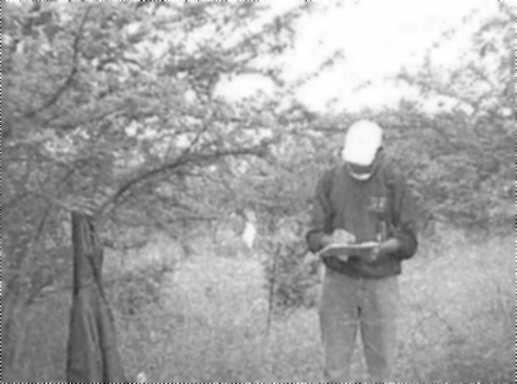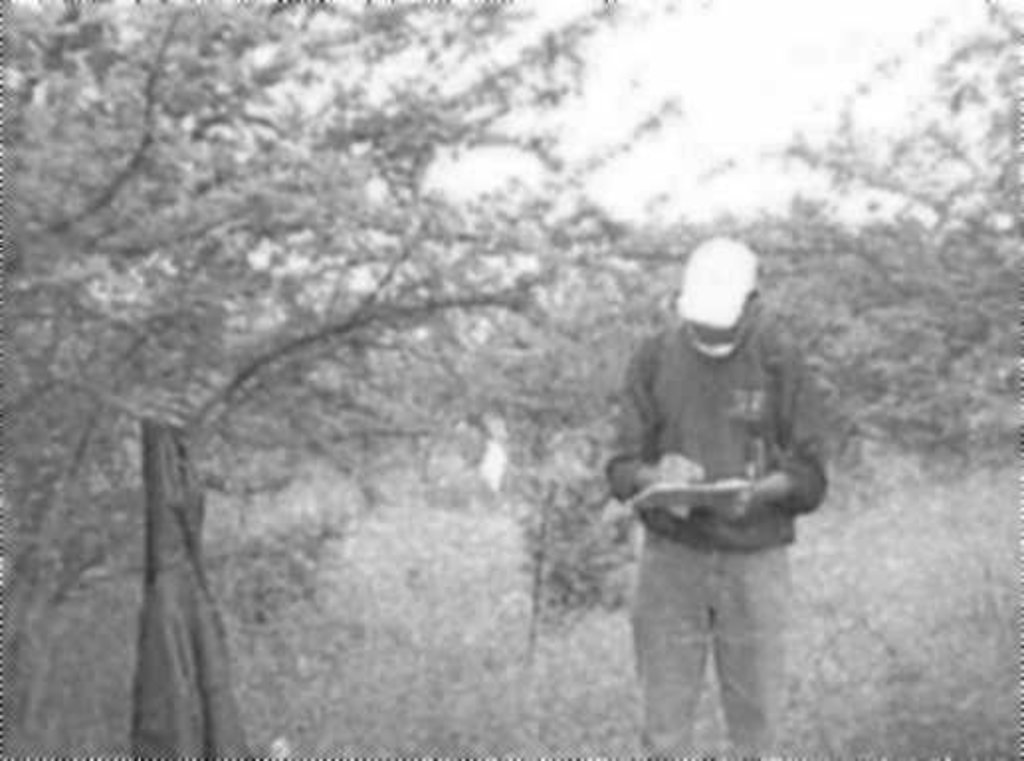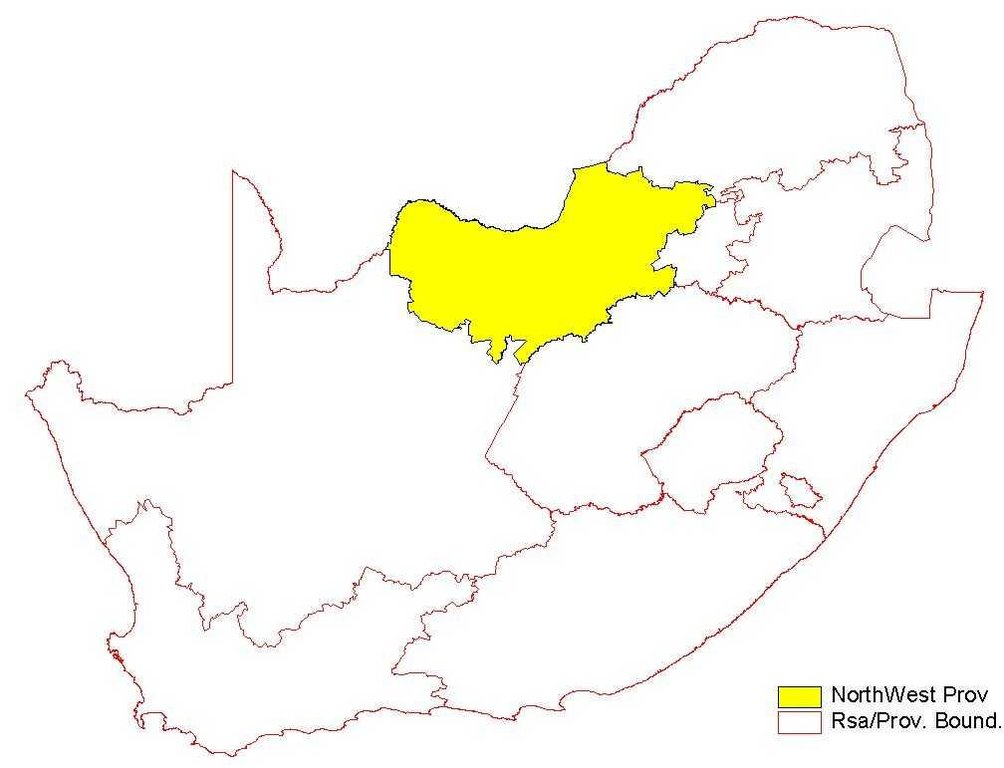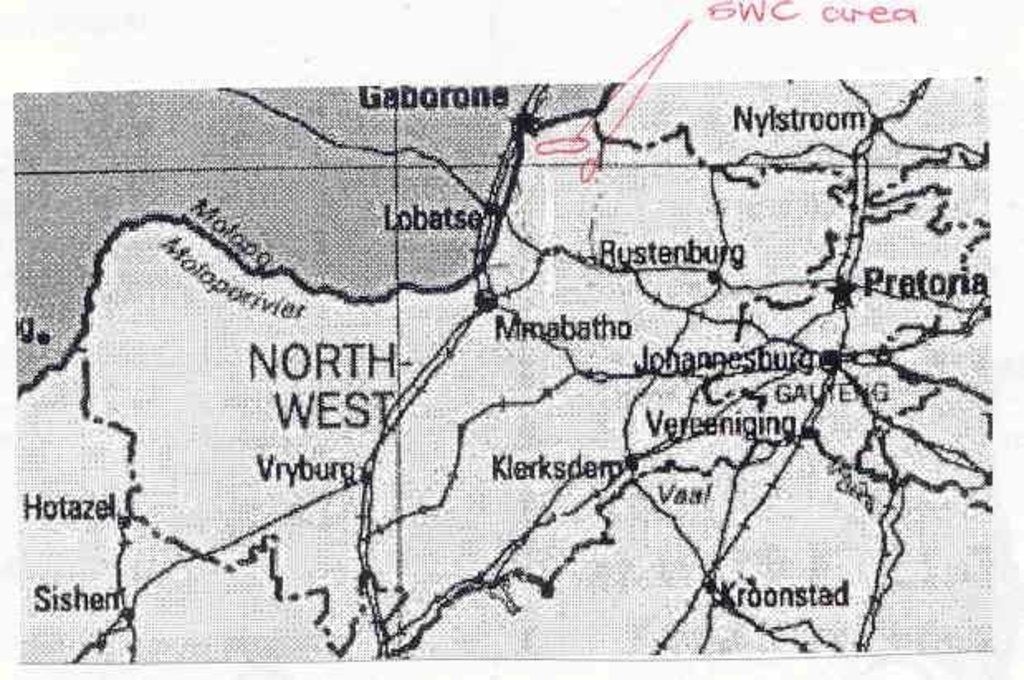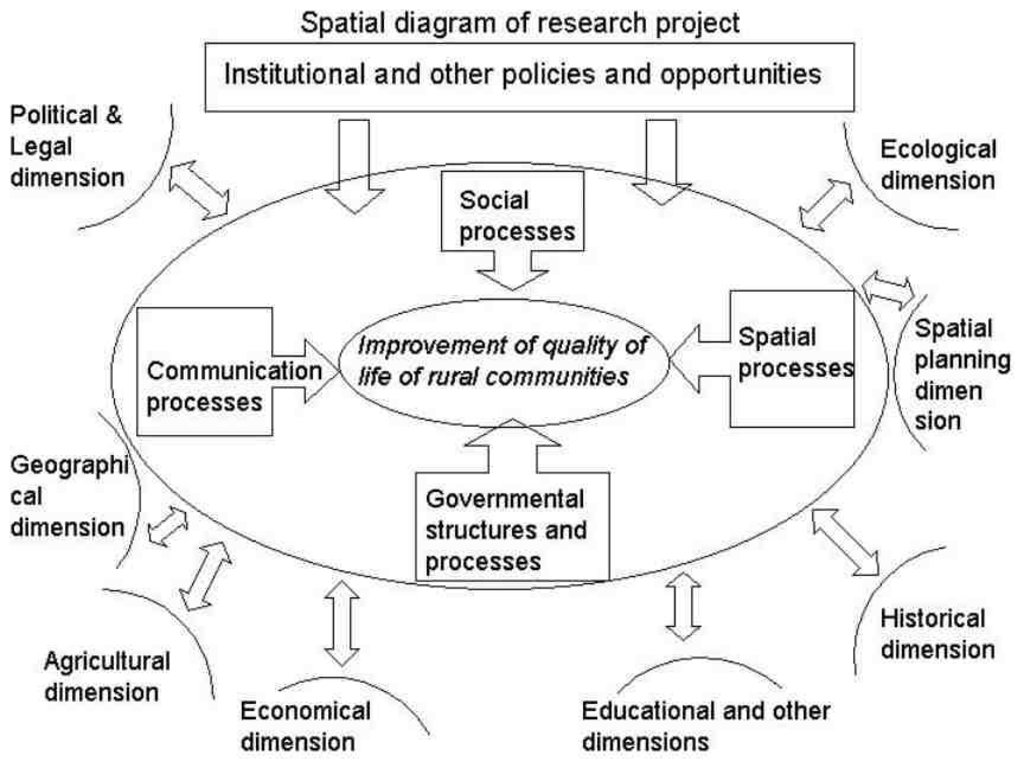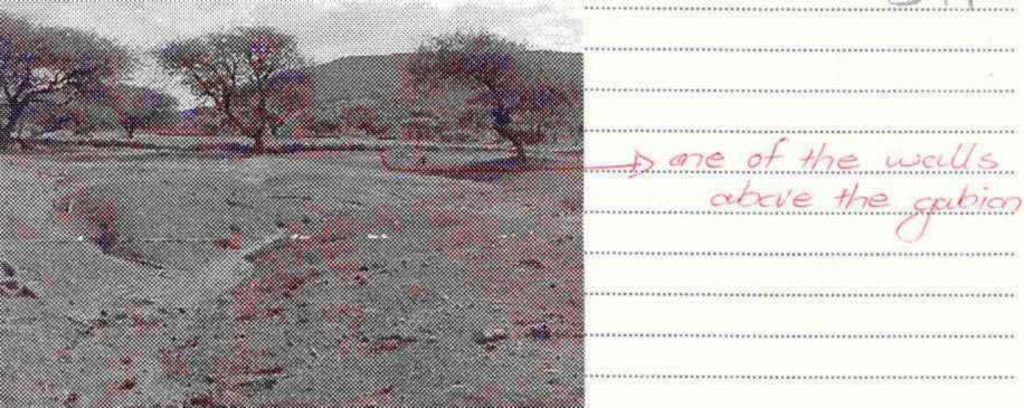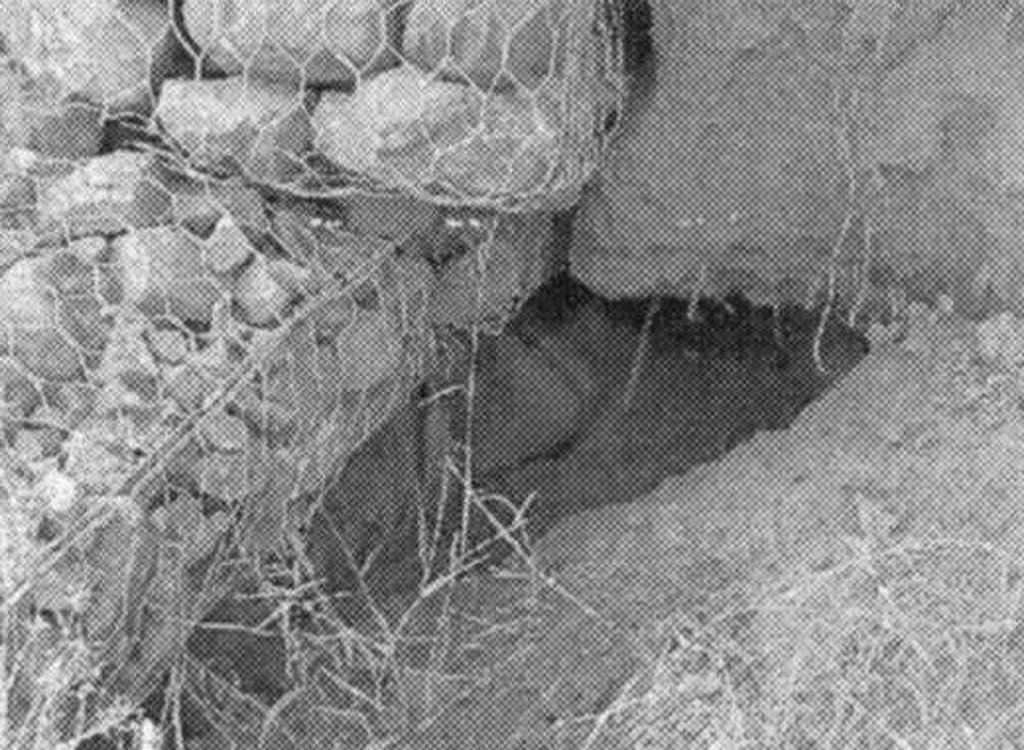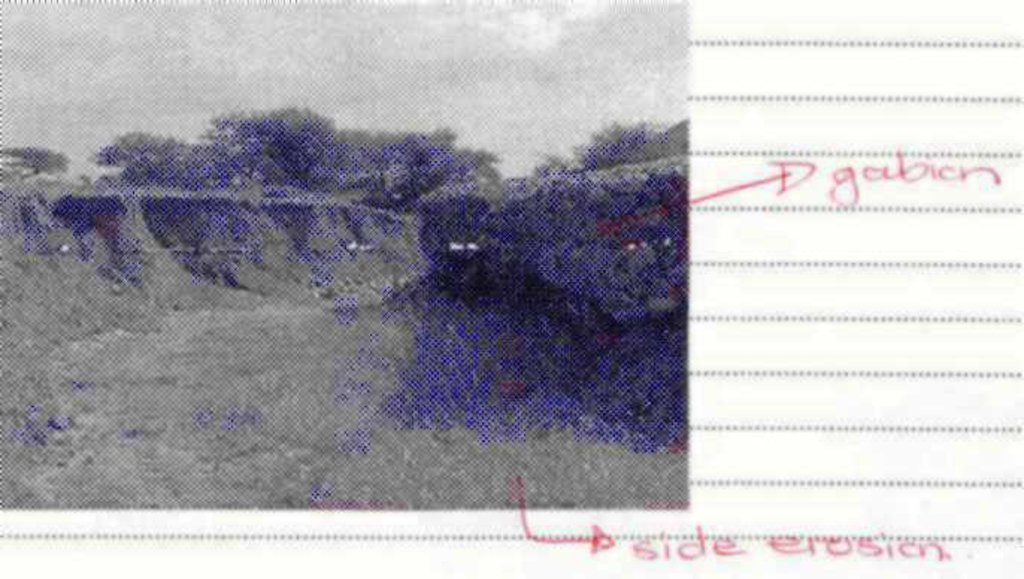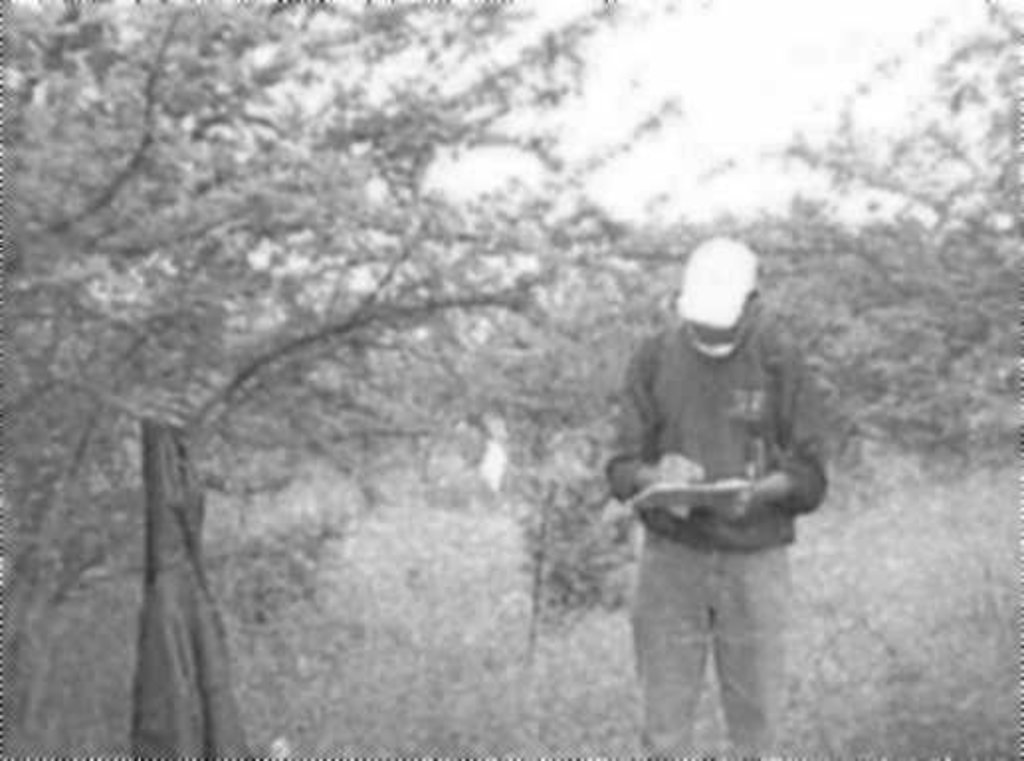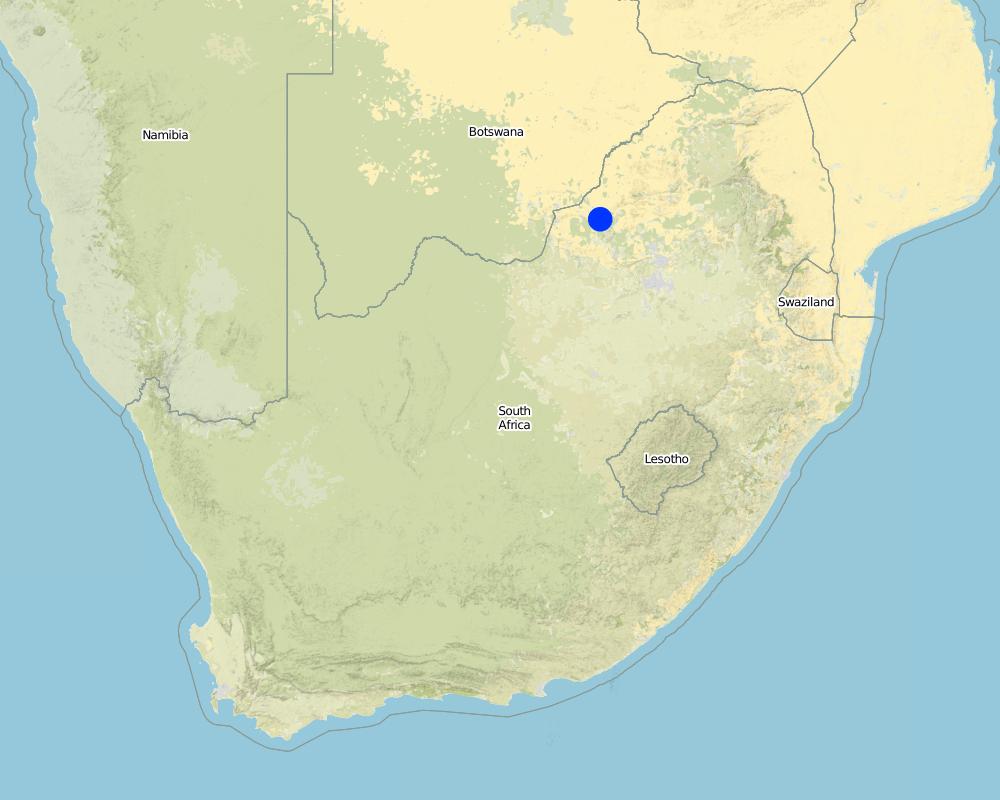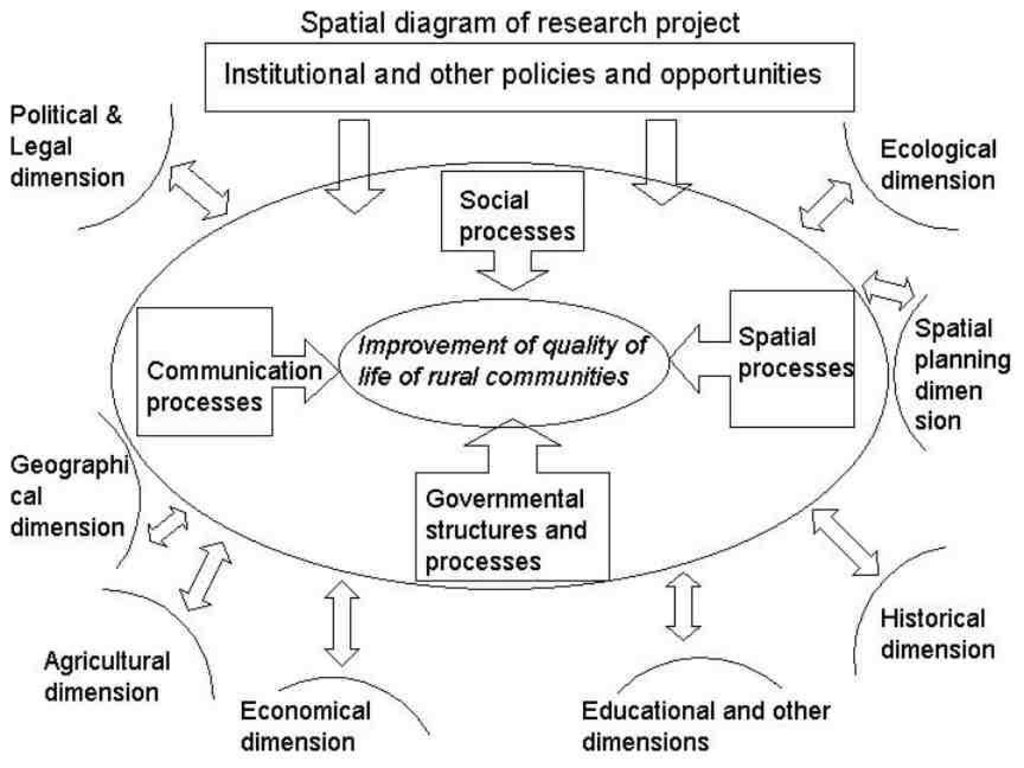Participatory rural approach [África do Sul]
- Criação:
- Atualização:
- Compilador/a: Unknown User
- Editor: –
- Revisor: Fabian Ottiger
approaches_2340 - África do Sul
Veja as seções
Expandir tudo Recolher tudo1. Informação geral
1.2 Detalhes do contato das pessoas capacitadas e instituições envolvidas na avaliação e documentação da abordagem
Pessoa(s) capacitada(s)
Especialista em GST:
de Wet Saroné
School of Environmental Science and Development, North West University, South Africa
África do Sul
Nome da(s) instituição(ões) que facilitou(ram) a documentação/avaliação da Abordagem (se relevante)
School of Environmental Science and Development, North West University (NWU) - África do Sul1.3 Condições em relação ao uso da informação documentada através de WOCAT
O/a compilador/a e a(s) pessoa(s) capacitada(s) aceitam as condições relativas ao uso de dados documentados através da WOCAT:
Sim
2. Descrição da abordagem de GST
2.1 Descrição curta da abordagem
Participatory Rural Approach including a partly holistic approach; between social and environmental sciences.
2.2 Descrição detalhada da abordagem
Descrição detalhada da abordagem:
Aims / objectives: Developing sustainable management of land and other natural resources in rural communities. Assess the historical process, causes, nature and extent of desertification and its human impact. An empirical study of the attitudes, perceptions and knowledge of the local population with regard to land use. Develop policy guidelines for integrated rural development focussing on spatial planning, settlement models, land use control measures, ecological restoration and sustainable farming practices. Pilot interviews with the extension officers were followed by interviews with members of the communities themselves. Plant surveys were conducted at the study areas.
Stages of implementation: There were 5 stages of implementation included in the pilot interviews, the main interviews and the plant surveys. Task 1: Preliminary negotiations with officials, authorities and local communities, including a literature and methodological review. Task 2: Data collection includes satellite data and aerial photographs, ground truth (site visits, meetings, surveys, interviews and questionnaires - a PRA approach. Task 3: Analysis and interpretation include archival research, image processing ad interpretation and analysis of surveys and questionnaires. Task 4: Validation and cross referencing by accuracy testing of remotely sensed results, historical cross referencing, comparison to Botswana results, comparison of results (communal land vs. commercial land). Task 5: Reporting.
2.3 Fotos da abordagem
2.5 País/região/locais onde a abordagem foi aplicada
País:
África do Sul
Região/Estado/Província:
North West Province
Map
×2.6 Datas de início e término da abordagem
Indique o ano de início:
2000
Ano de término (caso a abordagem não seja mais aplicada):
2003
2.7 Tipo de abordagem
- Baseado em projeto/programa
2.8 Principais metas/objetivos da abordagem
The Approach focused mainly on other activities than SLM (Suitable management, integrated community-base, rural development, land resources, natural resources.)
Developing sustainable management of land and other natural resources in rural communities. Specific objectives: Assess the historical process, courses, nature and extent of desertification and its human impact. Did an empirical study of the attitudes, perceptions and knowledge of the local population with regard to land use. Finally, we want to develop policy guidelines for integrated rural development focussing on spatial planning, settlement models, land use control measures, ecological restoration and sustainable farming practices.
The SLM Approach addressed the following problems: Desertification and its human impact, with the specific incorporation of indigenous or traditional knowledge. Inadequate policy towards integrated rural development.
2.9 Condição que propiciam ou inibem a implementação de tecnologia/tecnologias aplicada(s) segundo a abordagem
Disponibilidade/acesso a recursos e serviços financeiros
- Inibitivo
Funding not sufficient
Treatment through the SLM Approach: Involved with greater Department of Agriculture and subsequent funding
Quadro institucional
- Inibitivo
Part of previous disadvantaged homeland
Treatment through the SLM Approach: Policy recommendations
Quadro jurídico (posse de terra, direitos de uso da terra e da água)
- Inibitivo
The existing land ownership, land use rights / water rights greatly hindered the approach implementation No one takes responsibility for maintaining the applied technology.
Conhecimento sobre GST, acesso a suporte técnico
- Inibitivo
No contracts with large equipment companies
Treatment through the SLM Approach: With the Department of Agriculture, theses contract have been established
3. Participação e papel das partes interessadas envolvidas
3.1 Partes interessadas envolvidas na abordagem e seus papéis
- Usuários de terra/comunidades locais
Supingstad members. Specific ethnic groups: Tswana speaking (Ba-Suping)
- Especialistas em GST/ consultor agrícola
- Professores/alunos/estudantes
University
- Governo nacional (planejadores, responsáveis pelas decisões)
- Organização internacional
3.2 Envolvimento do usuários de terra/comunidades locais nas diferentes fases da abordagem
| Envolvimento do usuários de terra/comunidades locais | Especifique quem estava envolvido e descreva as atividades | |
|---|---|---|
| Iniciação/motivação | Nenhum | |
| Planejamento | Participativo | interviews/questionnaires, public meetings; Interviews with most viable group. Public meetings: what should we look at in the areas. |
| Implementação | Participativo | casual labour, responsibility for minor steps; Erosion control. |
| Monitoramento/avaliação | Nenhum | |
| Research | Nenhum |
3.3 Fluxograma (se disponível)
3.4 Decisão sobre a seleção de tecnologia/tecnologias de GST
Especifique quem decidiu sobre a seleção de tecnologia/tecnologias a serem implementadas:
- Principalmente usuários da terra, apoiados por especialistas em GST
Explique:
consultative.
Decisions on the method of implementing the SLM Technology were made by mainly by SLM specialists with consultation of land users. consultative.
4. Suporte técnico, reforço das capacidades e gestão do conhecimento
4.1 Reforço das capacidades/ formação
Foi oferecida formação aos usuários da terra/outras partes interessadas?
Sim
Especifique quem foi capacitado:
- Usuários de terra
- school children/students
Tipo de formação:
- Em exercício
Assuntos abordados:
Gabion construction
4.2 Serviço de consultoria
Os usuários de terra têm acesso a um serviço de consultoria?
Sim
Especifique se foi oferecido serviço de consultoria:
- nas áreas dos usuários da terra
Descreva/comentários:
Participatory rural approach; Key elements: Involvement in gabion construction; 1) Mainly: government's existing extension system, Partly: projects own extension structure and agent. Extension staff: mainly government employees 3) Target groups for extension: land users; Activities: erosion control through gabion construction
Advisory service is inadequate to ensure the continuation of land conservation activities; Extension officers available for information on erosion and encroachment control.
4.3 Fortalecimento da instituição (desenvolvimento organizacional)
As instituições foram fortalecidas ou estabelecidas através da abordagem?
- Sim, moderadamente
Especifique a que nível (níveis) as instituições foram fortalecidas ou estabelecidas:
- Local
Especifique o tipo de apoio:
- Reforço das capacidades/ formação
4.4 Monitoramento e avaliação
Monitoramento e avaliação são partes da abordagem?
Sim
Comentários:
bio-physical aspects were regular monitored through measurements
socio-cultural aspects were ad hoc monitored through observations
economic / production aspects were ad hoc monitored through observations
area treated aspects were regular monitored through measurements
no. of land users involved aspects were regular monitored through measurements
There were several changes in the Approach as a result of monitoring and evaluation: Initially only the extension officers were interviewed in groups; the communities as well, but in the end individual interviews proofed more effective. Woody component analysis: Where all members worked on one quadrate at the start, we changed the strategy to three teams of two people each, each team having their own specific responsibilities.
4.5 Pesquisa
A pesquisa foi parte da abordagem?
Sim
Especifique os tópicos:
- Sociologia
- Ecologia
- Tecnologia
Dê mais detalhes e indique quem realizou a pesquisa:
Sociology: interviews/trust building. Ecology: explain what we are doing. Technology: gabion construction
Research was carried out both on station and on-farm
5. Financiamento e apoio material externo
5.1 Orçamento anual para o componente de GST da abordagem
Caso o orçamento exato seja desconhecido, indique a faixa:
- 10.000-100.000
Comentários (p. ex. principais fontes de recursos/principais doadores):
Approach costs were met by the following donors: international non-government (funding): 80.0%; local community / land user(s) (labour, material): 20.0%
5.2 Apoio financeiro/material concedido aos usuários da terra
Os usuários da terra receberam apoio financeiro/material para a implementação de tecnologia/tecnologias?
Sim
5.3 Subsídios para entradas específicas (incluindo mão-de-obra)
Se a mão-de-obra pelos usuários da terra foi uma entrada substancial, isso foi:
- Comida por trabalho
Comentários:
Guides received food parcels. Other incentives; future change in policy.
5.4 Crédito
Foi concedido crédito segundo a abordagem para atividades de GST?
Não
6. Análise de impactos e declarações finais
6.1 Impactos da abordagem
A abordagem auxiliou os usuários da terra a implementar e manter as tecnologias de GST?
- Não
- Sim, pouco
- Sim, moderadamente
- Sim, significativamente
They did not adapt, but their awareness were raised.
A abordagem melhorou as questões de posse de terra/diretos do usuário que inibiam a implementação das tecnologias de GST?
- Não
- Sim, pouco
- Sim, moderadamente
- Sim, significativamente
The people worked with the specialist in establishing the technology.
Did other land users / projects adopt the Approach?
- Não
- Sim, pouco
- Sim, moderadamente
- Sim, significativamente
6.3 Atividades de sustentabilidade de abordagem
Os usuários da terra podem manter o que foi implementado através da abordagem (sem apoio externo)?
- Não
Caso negativo ou incerto, especifique e comente:
No: Erosion - the wire mesh baskets must be supplied by the appropriate companies, but otherwise they might pack stones without the wire mesh baskets. Yes for bush encroachment.
6.4 Pontos fortes/vantagens da abordagem
| Pontos fortes/vantagens/oportunidades na visão do usuário da terra |
|---|
| Awareness of erosion and bush encroachment as well as possible solution to it (How to sustain/ enhance this strength: School available; provide with poster, books, etc. Farmer's meetings.) |
| A community member can make a difference. |
| Pontos fortes/vantagens/oportunidades na visão do/a compilador/a ou de outra pessoa capacitada |
|---|
| Trust of people obtained (How to sustain/ enhance this strength: Deliver on the promises) |
| The community was motivated to implement their own water supply |
| Awareness of grazing strategy on the condition of the grazing field (How to sustain/ enhance this strength: Motivate extension officer to really provide appropriate solutions) |
6.5 Pontos fracos, desvantagens da tecnologia e formas de superá-los
| Pontos fracos/desvantagens/riscos na visão do usuário da terra | Como eles podem ser superados? |
|---|---|
| The projects do not address the problems the land users have | Refer identified problems to the relevant experts |
| Implementation of project takes a long time | Explain to the involved person the planned time schedule |
| Pontos fracos/vantagens/riscos na visão do/a compilador/a ou de outra pessoa capacitada | Como eles podem ser superados? |
|---|---|
| Number of available SWC specialist insufficient for amount of work | Train the amount of specialist/give the necessary background. |
| Use of translators | Make it clear to exact translations are given |
| Linguistic abilities not sufficient | Use translators |
7. Referências e links
7.1 Métodos/fontes de informação
- visitas de campo, pesquisas de campo
- entrevistas com usuários de terras
Links e módulos
Expandir tudo Recolher tudoLinks
Não há links
Módulos
Não há módulos


